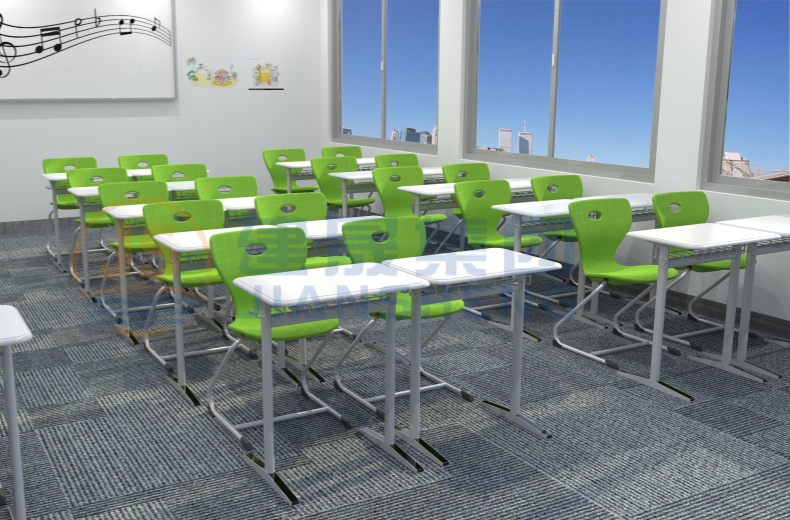
How to Use School Furniture Correctly in European and American Countries
2024-05-28 22:00
The proper use of school furniture is crucial for creating effective and healthy learning environments. The best practices and guidelines for using school furniture correctly in European and American countries, emphasizing ergonomics, safety, and inclusivity to ensure student well-being and optimal learning conditions.

1. Adjustable Desks and Chairs: Both European and American schools advocate for the use of fully adjustable desks and chairs. Proper adjustment involves setting the height and angle to suit each student’s size and comfort needs.
2. Ergonomic Sitting Posture: Students should be taught the importance of ergonomic sitting posture. Feet should be flat on the floor, knees at a 90-degree angle, and back supported by the chair.
3. Desk Height: The top of the desk should be at or slightly above elbow height when students are seated. This setup helps prevent slouching and supports proper arm positioning.
4. Monitor Placement: For classrooms using computers, the top of the monitor should be at or just below eye level, and the screen should be about an arm's length away to reduce neck and eye strain.
5. Flexible Classroom Layouts: Flexible and reconfigurable furniture supports different teaching methods and activities. Desks and chairs on casters allow for quick changes in classroom layout, promoting dynamic and interactive learning environments.
6. Regular Adjustments: Frequent adjustments are necessary to accommodate students’ growth and changes in activities. Teachers should periodically remind and assist students in adjusting their desks and chairs.
7. Student Involvement: Involving students in adjusting their own furniture helps them understand the importance of ergonomics and encourages them to take responsibility for their comfort and health.

Proper use of school furniture is essential for fostering a productive and healthy learning environment in both European and American schools. By adhering to ergonomic principles, conducting regular training and maintenance, and involving students in the adjustment process, schools can enhance student comfort and engagement. These practices help prevent discomfort and injuries, contributing to better academic performance and overall well-being. As educational environments continue to evolve, ongoing attention to the correct use of school furniture wil remain a critical component of student success.
Get the latest price? We'll respond as soon as possible(within 12 hours)







